Do you know the difference between buy to open and buy to close when trading options?
They are the differences between an option buyer and an option seller. Today SlashTraders will show you the pros and cons of buying or selling options. So you know which trading style works better for you.
Contents
- What Is Buy to Open?
- What Is Buy to Close?
- Risks and Rewards of Option Buyers and Sellers
- Probability of Profits of Option Buyers and Sellers
- Impact of Theta Decay to Buying and Selling Options
- Different Ways to Close the Trades
- Seller-Specific Option Rolling Strategy
- Best Bullish Sell to Open Options Trade Right Now
What Is Buy to Open?
Buy to open is when you buy an option to open a trade. Which is a typical option buyer strategy.
A bullish strategy for option buyers is to buy a Call. When the stock price goes up, the Call option can be exercised to buy shares below market price for a profit.
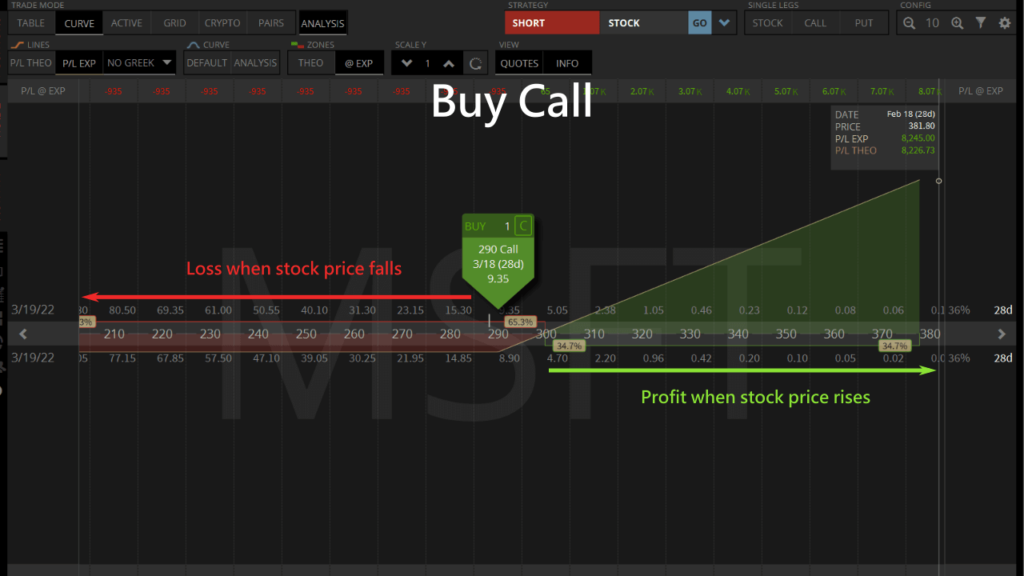
A bearish strategy is to buy a Put option to open. When the stock price goes down, we can exercise the Put option to sell shares above the market price for a profit.
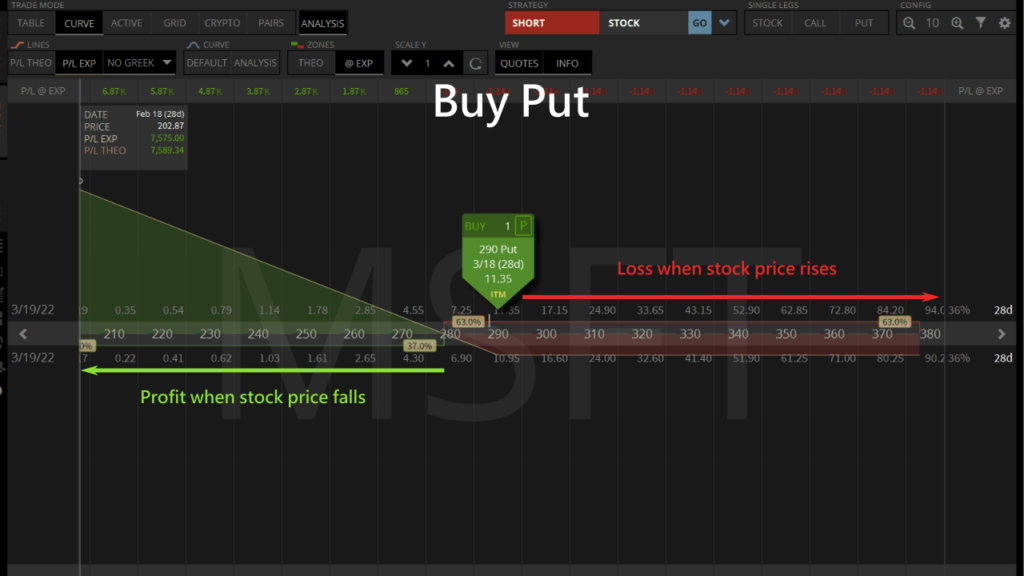
What Is Buy to Close?
Buy to close is when you close a short option to settle an options trade. Which is part of a sell to open strategy for option sellers.
A bullish option selling strategy is to sell a Put. When the stock price goes up, the option value will depreciate, and the seller keeps the premium for a profit.
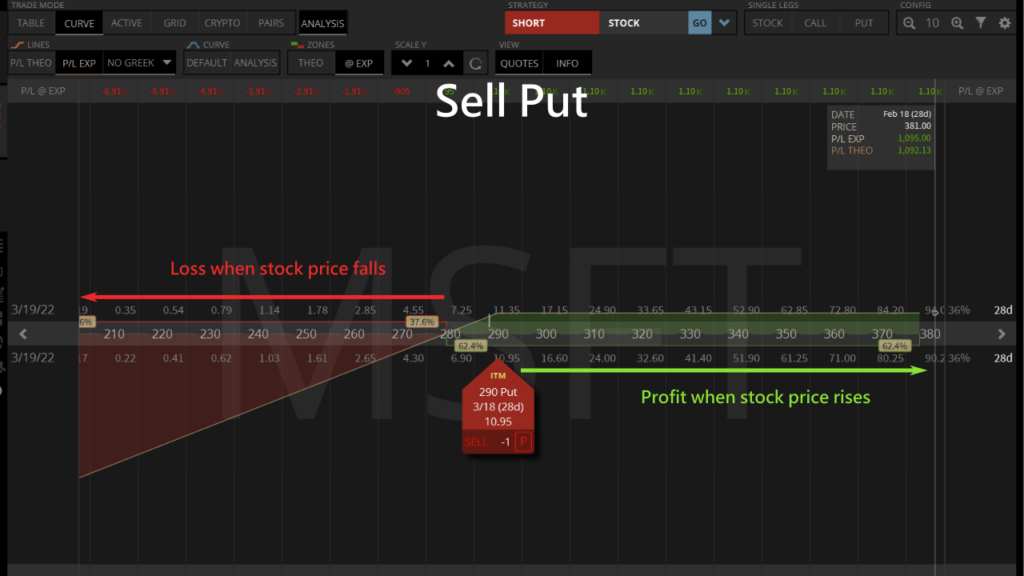
A bearish option selling strategy is to sell a Call. When the stock prices go down, the Call option will become worthless, and the seller collects the premium for a profit.

Risks and Rewards of Option Buyers and Sellers
We open bullish option trades for MSFT that expire next month to illustrate the differences between buyers and sellers.
An option buyer can trade an ATM Call by spending $935 in premium. If the stock price goes up, the maximum gain of the Call option is unlimited.
If MSFT drops in price, the maximum loss for the option buyer is the cost of purchasing the Call.
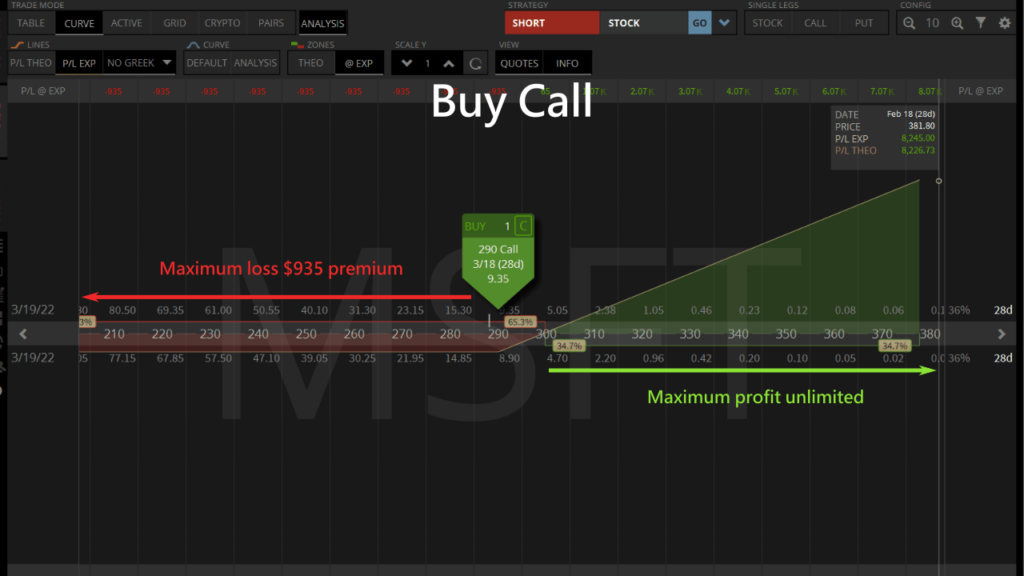
An option seller can trade an ATM Put to collect a $1,095 premium as income. If the stock price goes up to make the Put option worthless, the maximum gain is the premium collected.
If the stock price drops, the maximum loss for the option seller is buying the worthless stock at the strike price.
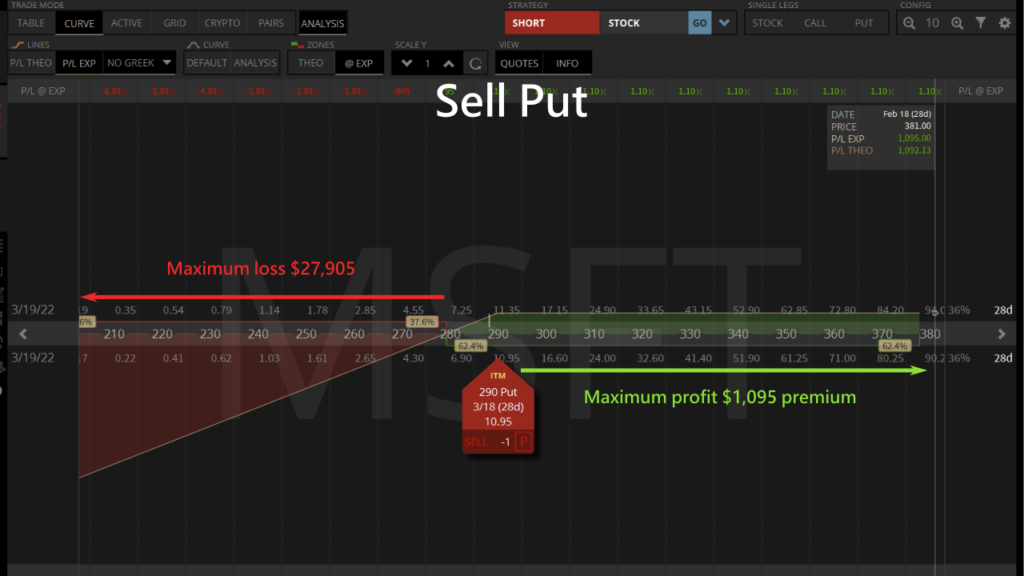
If we compare the risks and rewards of the two strategies, an option buyer has limited risks with unlimited rewards. While an option seller has unlimited risks with limited rewards.
| Market expectation | Strategy | Maximum profit | Maximum loss |
|---|---|---|---|
| Bullish | Buy Call | Unlimited | Premium |
| Bullish | Sell Put | Premium | Strike price x 100 - premium |
| Bearish | Buy Put | Strike price x 100 - premium | Premium |
| Bearish | Sell Call | Premium | Unlimited |

Probability of Profits of Option Buyers and Sellers
Apart from risks and rewards, we can also compare the two option strategies with the probability of profit.
A bullish Call option buyer needs to pay a premium to buy to open the trade, so we need the stock price to go up a great deal to offset the cost of premium before making a profit.
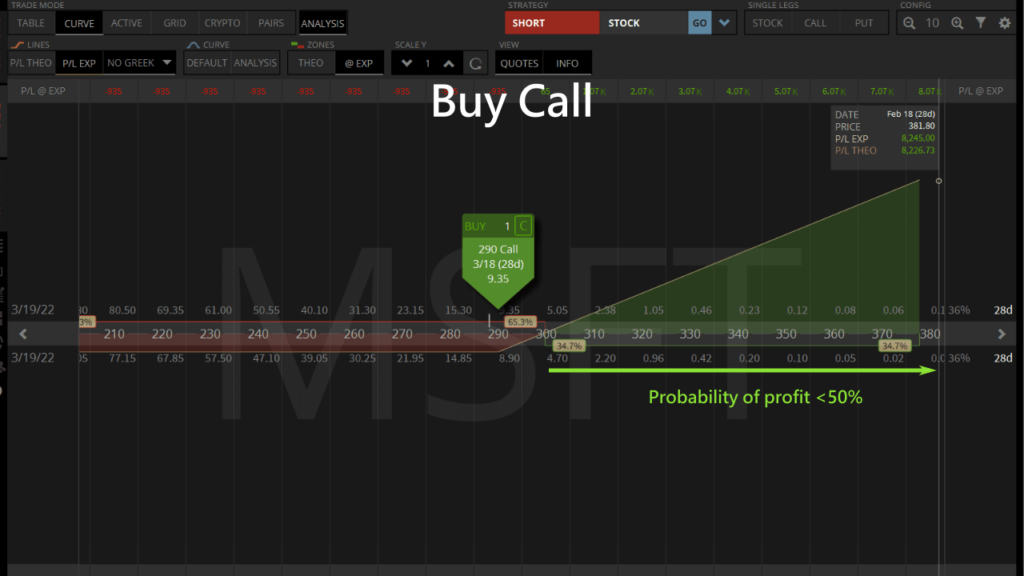
As a result, the probability of profit for buying an ATM Call is less than 50%, lower than buying stocks.
A bullish Put option seller collects a premium to sell to open the trade, so the breakeven price is actually lower than the strike price. A seller can profit even if the stock price doesn't move.

So the probability of profit for selling an ATM Put is greater than 50%, higher than buying stocks.
For a Call option buyer to profit, the stock price needs to move up as expected. While a Put option seller can profit as long as the stock price doesn't fall.
| Strategy | Bullish stock price | Unchanged | Bearish stock price |
|---|---|---|---|
| Buy Call | Profit | Loss | Loss |
| Sell Put | Profit | Profit | Loss |
| Buy Put | Loss | Loss | Profit |
| Sell Call | Loss | Profit | Profit |
So selling options is a good way to control the odds of trading in your favour.
Impact of Theta Decay to Buying and Selling Options
Options contracts have expiration dates, so an options trade is only profitable if the stock price moves as expected before expiration.
As time passes, theta will cause the option value to depreciate. If the option doesn't generate a profit before expiration, the premium paid for the option becomes worthless.
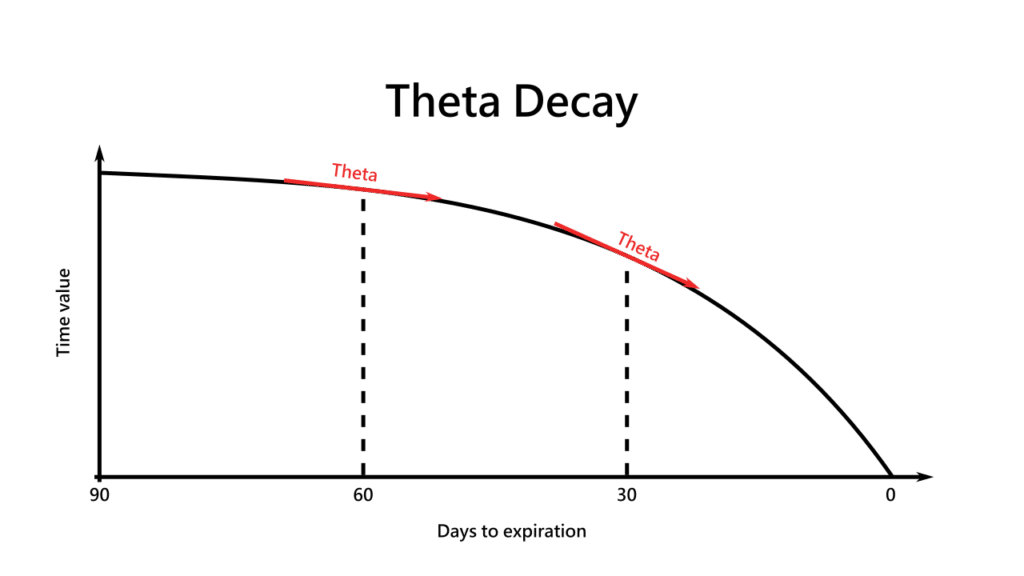
So theta decay works against the option buyer but favours the option seller. This allows a patient option seller to wait for the options to depreciate for a profit.
Different Ways to Close the Trades
Now we know how the two different strategies enter option trades, we can look at the differences in closing trades.
After a trader buys to open a trade, there are two ways to close the trade:
- One is to exercise the option contract to either buy (Call) or sell (Put) 100 shares at the strike price.
- Another way is to sell to close the trade for cash.
An option seller cannot exercise the option contract:
- Wait for options to be exercised to sell (Call) or buy (Put) 100 shares at the strike price.
- Or settle the position in cash with buy to close.
| Strategy | Settle in shares | Settle in cash |
|---|---|---|
| Buy Call | Exercise to buy 100 shares | Sell Call to close |
| Sell Put | Exercised to buy 100 shares | Buy Put to close |
| Buy Put | Exercise to sell 100 shares | Sell Put to close |
| Sell Call | Exercised to sell 100 shares | Buy Call to close |
Seller-Specific Option Rolling Strategy
A unique closing strategy for option sellers is rolling. This is where the seller combines buy to close with sell to open and extend an options trade to a later expiration date.
If an earlier bullish short Put option on MSFT was wrong, it could become ITM at a loss. If we maintain a bullish outlook on MSFT, we can buy to close the trade at 14 days to expiration, then sell to open a Put that expires next month. This way the premium from the later date Put can offset the initial loss.
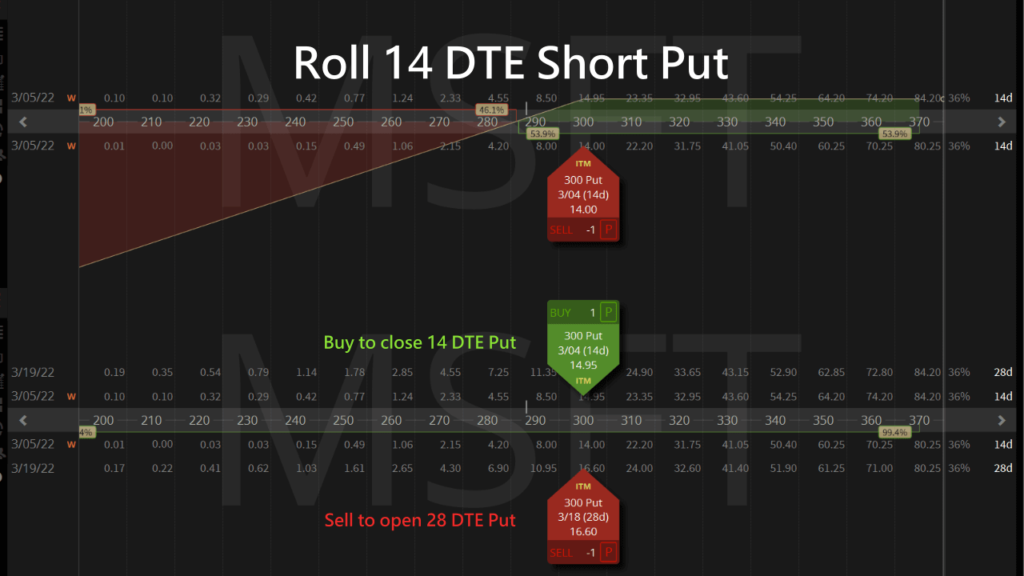
After the rolling transaction, we are left with a short Put option that expires next month, allowing us more time to wait for the stock price to rebound in a bullish trend for a profit.
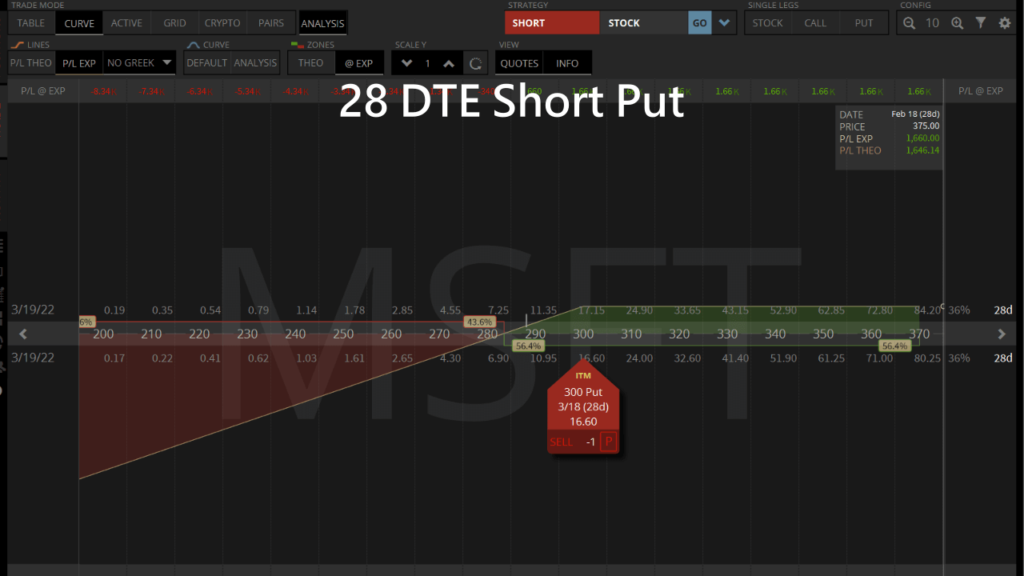
Once we understand how rolling works, as long as our prediction about the price trends doesn't change, we can continue to roll and delay the option expiration to wait for profit from a rebound.
Best Bullish Sell to Open Options Trade Right Now
From the list of trades in the Bull Put Spread Screener, ZG is the best bullish Put Spread right now:
- It has 143% upside.
- It has been on a bullish trend for 6 days (BullC:6 UpTrend).
- Long Signal Days shows it bottomed out 13 days ago.
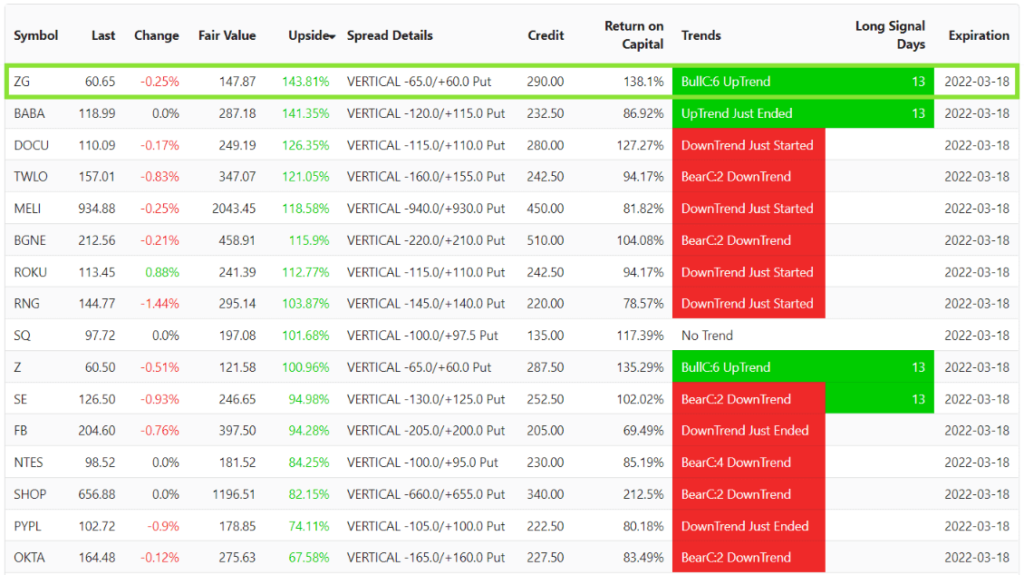
We can sell an ATM Bull Put Spread that expires next month. The trade uses $210 of buying power with a maximum profit of $290, giving us a return on capital of 138%.
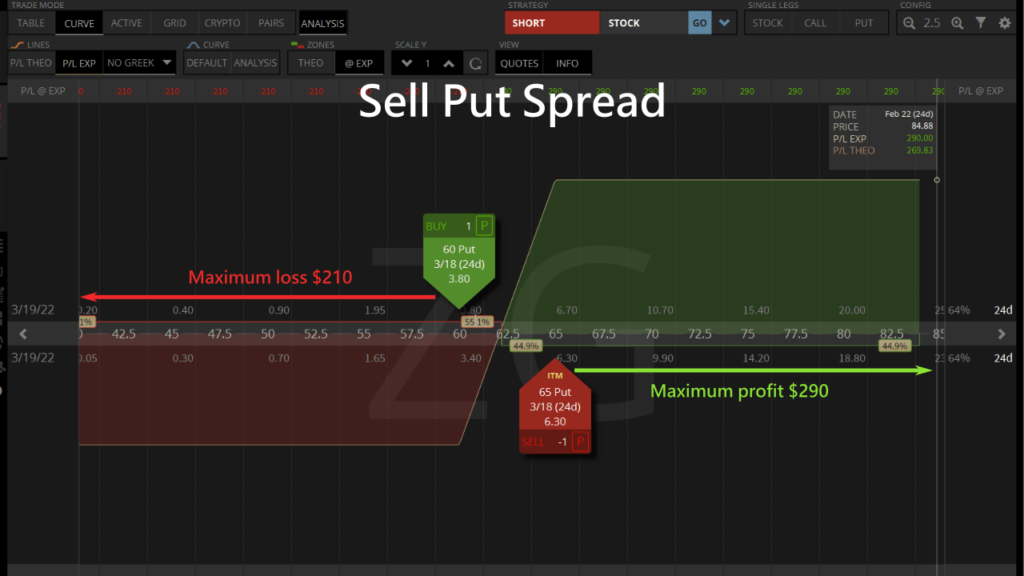
Not only can a patient option seller profit from theta decay, but one can also use the rolling strategy to use future premiums to offset losses and wait for a market rebound.
Now you know the differences between buy to open and buy to close. Even though an option buyer has a better risk/reward ratio, but an option seller can better control the probability of profit. You can use the Bull Put Spread Screener to find the best bullish opportunities.
Trending Articles
- What Are Options Contracts and How Do They Work?
- 3 Things We Hate About Selling Covered Calls
- Options Wheel Strategy to 3x Your S&P 500 ETF Return
- How to Setup Your Telegram Username? Get Real-Time Trade Alerts
- How to Roll Options to Repair Losing Trades
- Complete Guide to Delta Hedging to Protect Your Portfolio
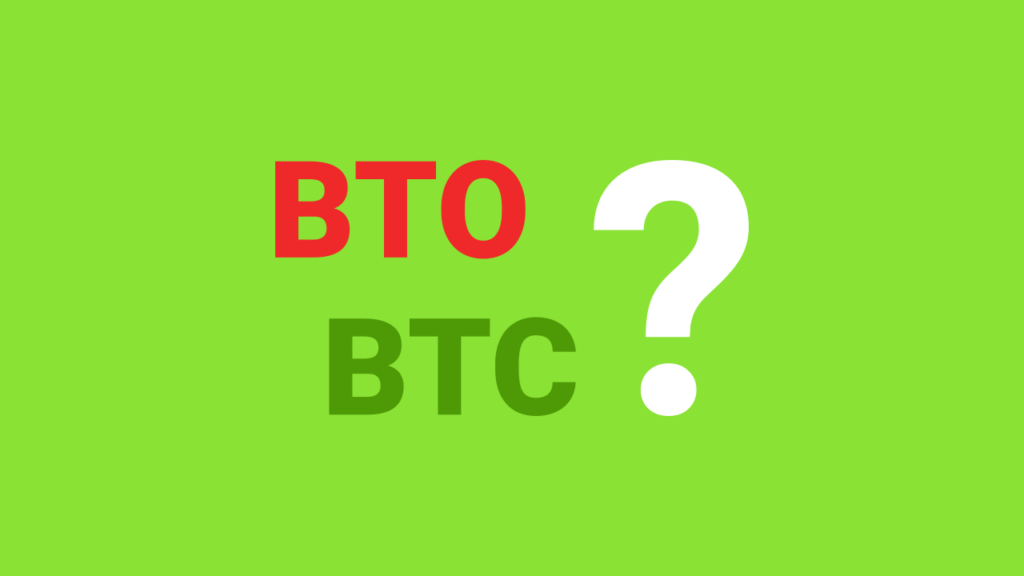
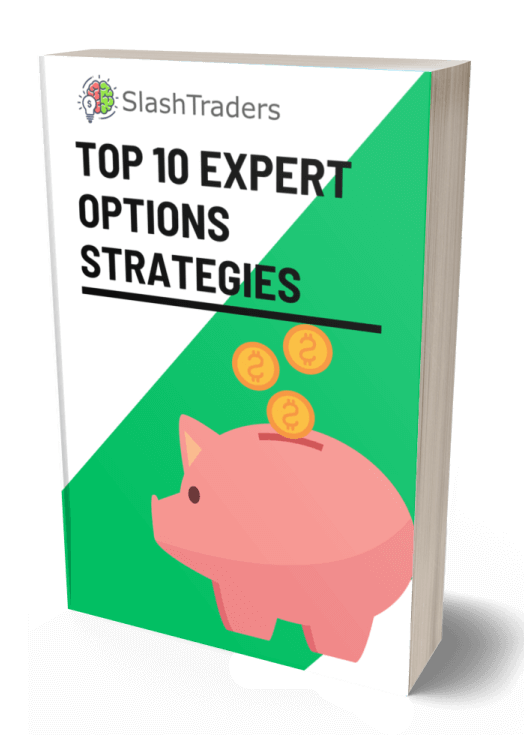
看來sell to open的賣選擇權策略優點比較多
快來試試看
當選擇權賣家可以有效的控制獲利的機會
如果擔心風險太高,可以用垂直價差和鐵兀鷹降低風險
Thank you for the great explanation about the differences between buy to open and buy to close.
I see your point about the advantages of being an option seller.
I’ll give it a try.
Yes, selling options is a great way to make theta and time value work for you, and control the odds of the trade.